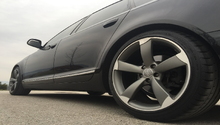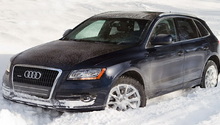Audi: How to Choose Aftermarket Wheels
Changing the wheels on an Audi A or Q series model has been very popular with Audi owners as a way to add a clean, sophisticated look to their car. Here's a good starter for what to look for in an aftermarket wheel to fit your fine German car.
This article applies to the Audi Q5/Q7, A3, A4 B7, A4 B8, A6 C5, and A6 C6 (2005-2016).
Changing the wheels on an Audi A or Q series is a popular way to improve both the look and performance of your car. There are so many different aftermarket companies making wheels these days, it is nearly impossible to know what is going to fit and look good on your car or SUV. Luckily, there are plenty of resources available online to help you out. Here are the steps for effectively evaluating what’s on the market and what might work best for your Audi model.


Materials Needed
- Hydraulic jack
- Lug nut sockets
- Torque wrench
- Gloves
- Wheel bolt cover remover
- Breaker bar
Step 1 – What are your goals?
Do you just want wheels that look awesome and fill the wheel well better, or do you want wider wheels and tires, or lighter wheels for better performance? Maybe you are just going for the perfect stance, and clearance as well as rubbing doesn't matter. Your wheel decision will hinge largely on what your intended purpose for the car is. If you want better lap times, you will likely be spending money for the lightest, widest wheels that can fit. If all you care about are looks, a no name wheel in a huge size will look the part; though, it may not perform as well as your stock Audi parts. Wheels are not cheap, and you want to be certain you are getting what you want before you pull the trigger.

Step 2 – Start with what you have
Before you can get new rims and tires on your car, you need to know some critical dimensions of the rims you already have: center hub diameter, bolt circle diameter, offset/backspacing, and how much room you have under the fenders, or before you hit the control arms. The tire information sticker on the door jamb will list the factory wheel and tire sizes for your particular year and model. Figure 3 has many of the important wheel dimensions illustrated.
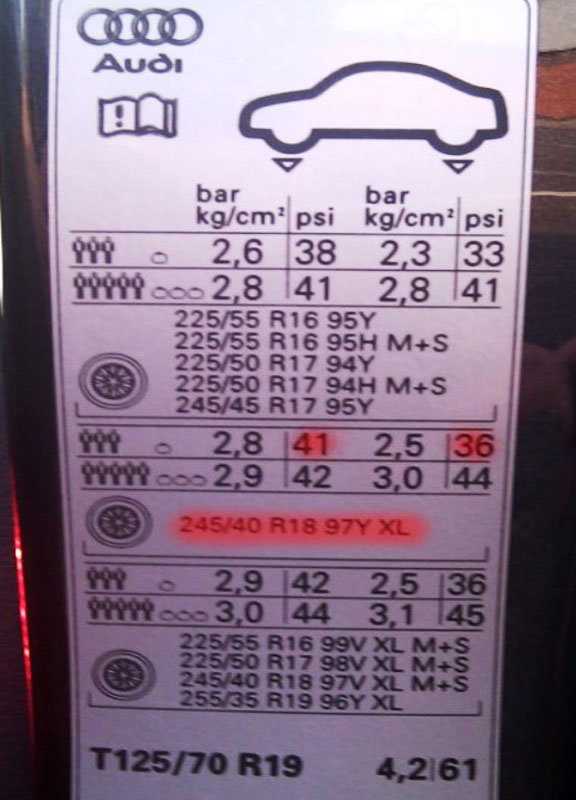
Figure 3. Look for the tire info sticker inside the door jamb of your car. 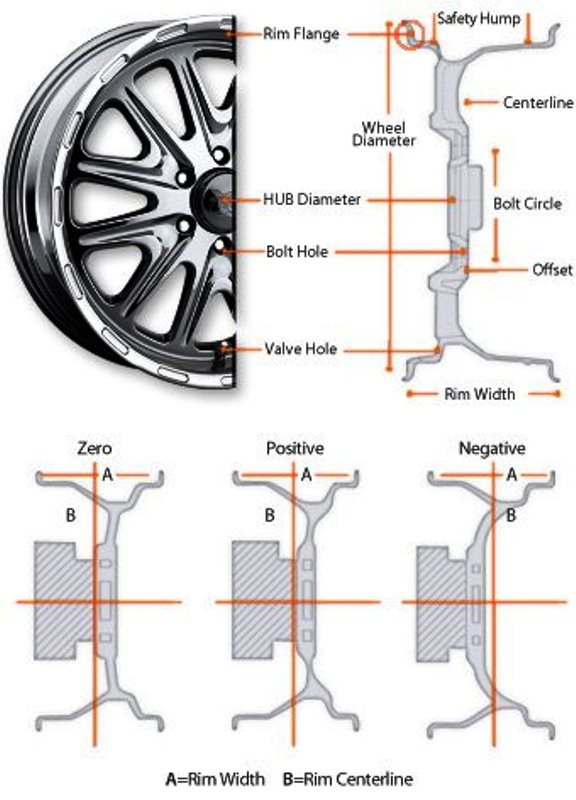
Figure 4. Important wheel terms and dimensions.
Step 3 – How much do you want to spend?
Like all things you purchase in life, how much you can spend on a set of wheels is limited only by the size of your bank account. A set of used OEM wheels in a larger diameter can start at around $500, but you can spend thousands of dollars for some race-ready models, like HRE or BBS wheels. If you're on a budget, used wheels can save you 30% or more off the cost of new; if you can't live with blemishes, you can always have them powder coated to look new again.
German OEM wheels that originally came on similar Audis guarantee wheel fitment, with no concerns about the tires rubbing fenders or sticking out too far. The downside of new OEM wheels is the cost, which is often much higher than lighter or wider aftermarket models. When you are shopping, you also have to be aware that cheaper wheels are often composed of heavier, cheaper materials. Make sure to check out online reviews and forum opinions before you take the plunge, and compare weight as well. Some Audi owners on AudiWorld prefer cast aftermarket rims offered by Alzor, MRR, Hartmann, and TSW over Audi-certified OEM rims, which can cost more and aren’t superior to aftermarket replicas.
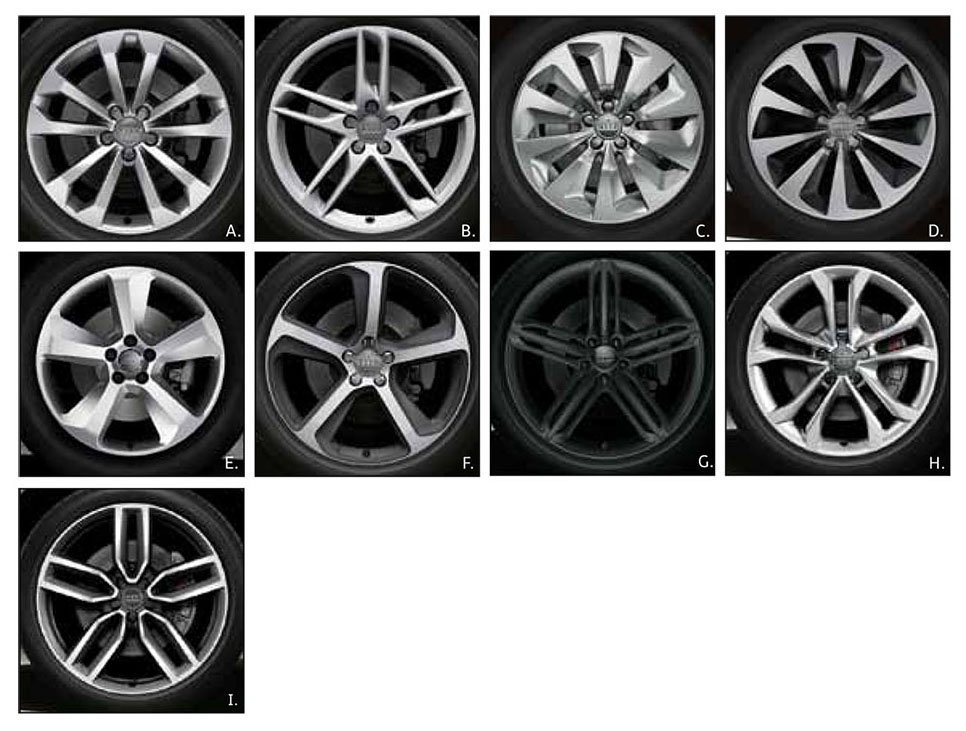
Step 4 – Size tires properly for wheels
Not only are looks important, but you want the overall diameter to be close to an original factory size, so as not to confuse the computer or throw off your speedometer as well as odometer readings. The closer you match the original outside tire diameter that your car came with, the easier your life will be. If you end up with tires with too big of an overall diameter, you may have to have things re-calibrated by your dealer, or with your VAG-COM software.

Wider wheels and tires can increase the performance, handling and style of your car. As for wheel width, it’s important to factor it in when calculating the offset. These will ultimately determine how flush the wheel will be within the wheel arches, and make sure it doesn't interfere with the control arms, or rub inside the fenders. The front suspension is fairly close to the tire already in stock form, so watch for the spacing with wider wheels and tires. The wheel width will affect the weight of the wheel, too; The wider it is, the more it will weigh. It may also affect the look of the wheel; the lip will be deeper the wider the wheel is, on most wheels.
It’s good to look at a calculator for making your wheel width decisions in finding the right fit, such as RimsnTires, which allows you to adjust specs, try different settings, and compare the results, or Wheel-Size.com, which provides a fitting and tire size guide and knowledge base.

Pro Tip
Low dust brake pads can ease the cleaning of your rims and are a very worthwhile upgrade to keep your new rims looking their best
Step 5 – Be ready for winter driving conditions
Most Audi models come with 16-18" rims stock, and if you replace these with something bigger, the original rims make great winter rims for mounting snow tires. For safe driving during the winter months, it is typically better to have taller, narrower tires, with winter specific tread patterns that cut through the snow. If your Audi came with summer tires on 19" or bigger rims, it’s good to look for 18-inch replicas that you can mount winter tires to, so as to sustain severe cold winter conditions.
You’ll also need to find the best tires to use during the winter season. For example, the Pirelli Winter 210 Sottozero or Michelin Alpins can work well for driving during winter in the snow and on slippery roads. Undulating sipes connected by longitudinal notches have been added to the tire for high lateral stability on snow-covered surfaces; deep diagonal grooves make them quieter and offer lower rolling resistance.

Step 6 – Check online tire websites
AudiWorld members like to tap into a few websites to see the latest in product offerings and their pricing options. Here are a few to check out.
Achtuning.com specializes in offering aftermarket products and information to owners of Audis and other members of the Volkswagen family. USARIM.com has an Audi wheels page with available products and pricing, and drop down menus for all of the latest models, plus wheel finish and size. If you are looking for used OEM wheels, or even new models, check on eBay for Audi wheels where there is a broad selection, plus aftermarket models as well. Tirerack.com is another popular tire shopping site with Audi owners, which not only has the latest up-to-date information, but an online visualizer where you can try different wheels on your car.
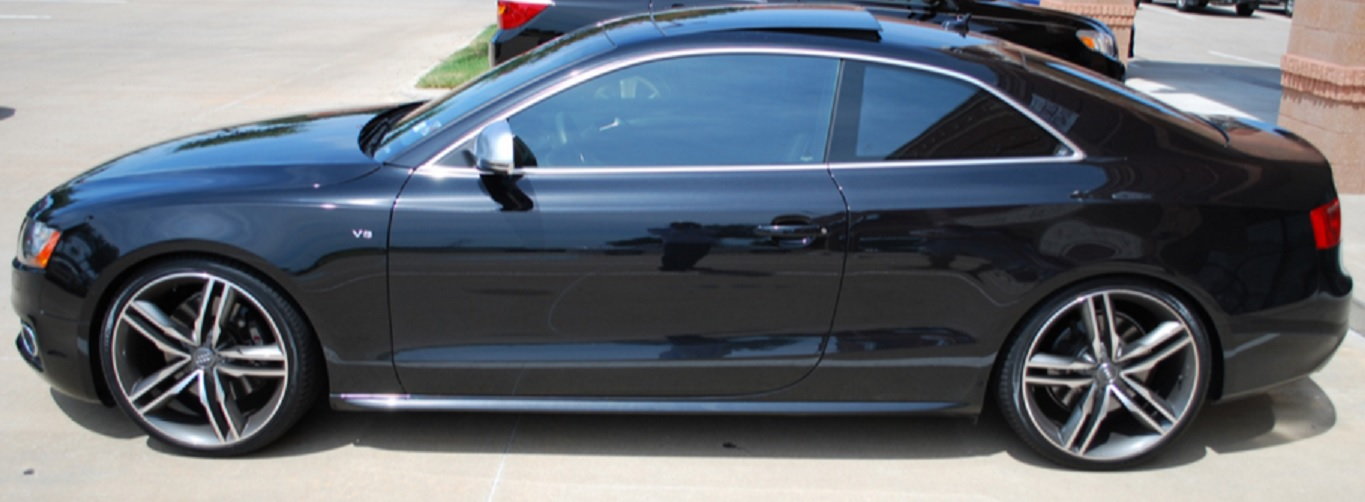
Related Discussions
- Need Help Choosing Rims - AudiWorld
- Stock Rims vs Non-Expensive Aftermarket - AudiWorld




